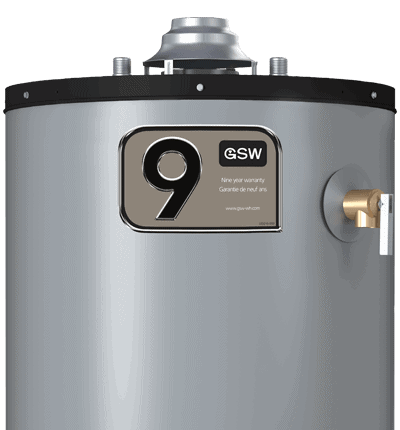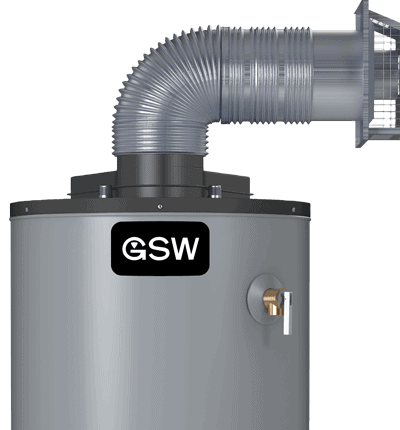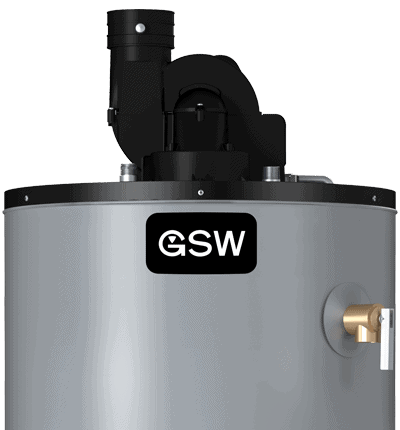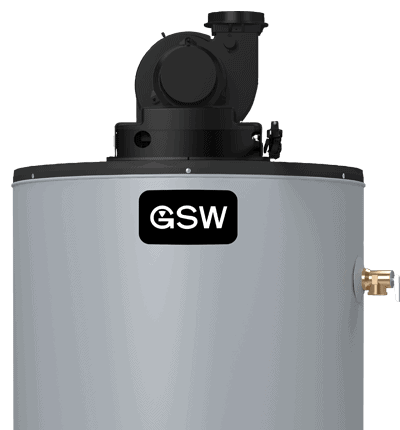Condensate is the result of airborne water vapour being chilled below the dew point. The dew point is the temperature at which water vapour turns into liquid. Low incoming water temperatures cool the piping and the heat transfer surfaces of the water heater. When the main burner comes on, the hot flue gases turn into condensate upon contact with these surfaces. The typical home water heater will produce about one-half gallon of water vapour during every hour of operation. Condensate is often mistaken for leaking. Newer heaters will condensate more than older heaters because modern water heaters are much more efficient than their predecessors. The newer heaters utilize as much of the energy out of the main burner flame as possible. This lowers the flue gas and tank storage temperature and closer to the dew point temperature.
To distinguish between a condensing water heater and a leaking water heater:
1. Wipe up any water under the heater.
2. Turn the knob on the thermostat to the pilot position.
3. Wait 8 hours, check for water accumulation under the heater.
4. Condensation should stop when the entire tank of water is heated above approximately 115 degrees:
If no water is found under the heater, the water heater was condensing.
If water is found under the heater, check further for a loose fitting. If all fittings are tight and the tank is leaking, replace the water heater. Leaking heaters cannot be repaired.










